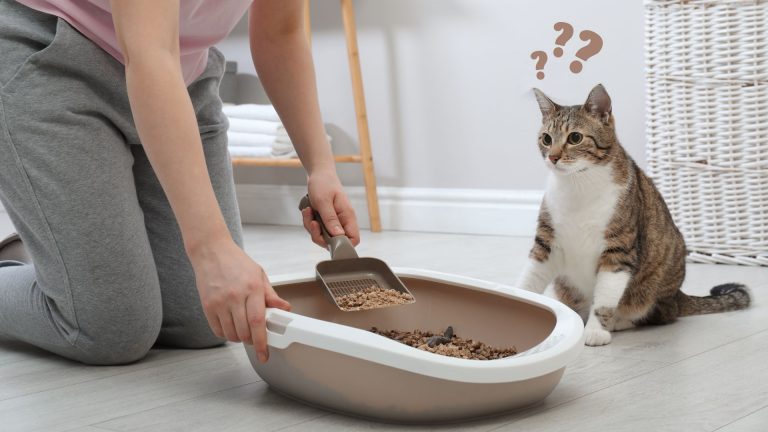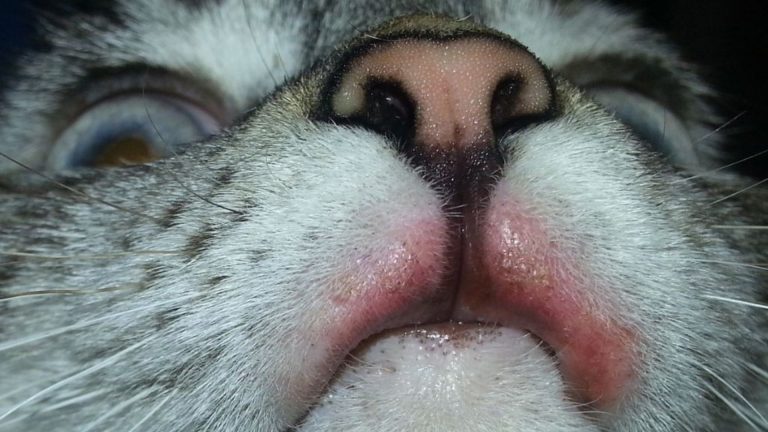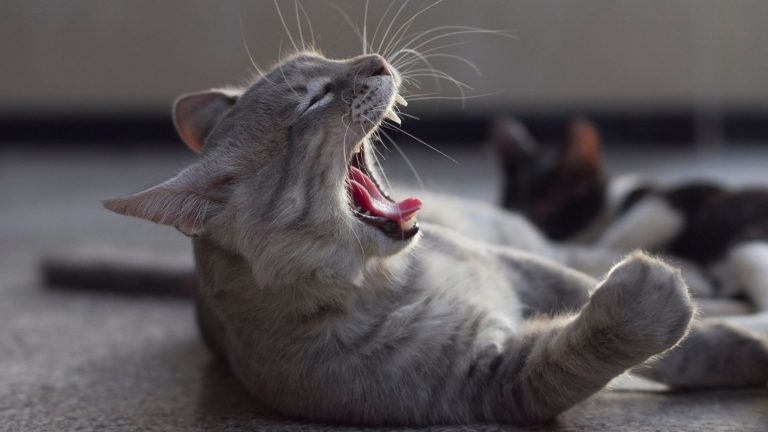How To Keep Cats From Scratching Furniture – Useful Solutions
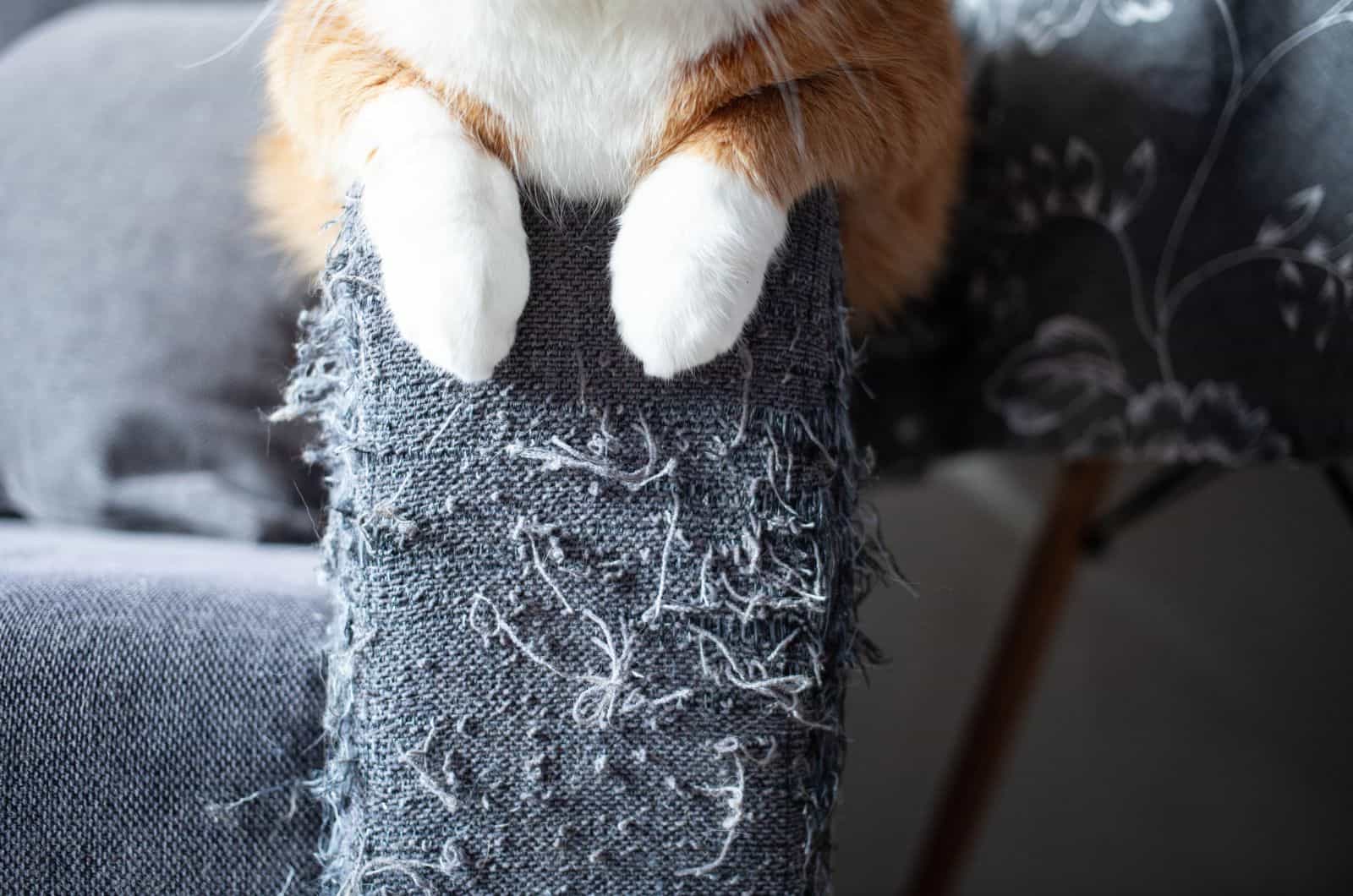
If you’re a cat owner trying to deal with your cat scratching the floor, or scratching the walls and furniture, then this article is for you.
Cats are remarkable animals and they can communicate very well with their owners through their behavior and body language.
However, if you cannot quite figure out what your feline friend is trying to tell you, then their behavior can be really annoying!
When cats are scratching everything around them, it means that they want or need something, or that they’re simply bored.
If you want to stop or redirect that behavior, then check out this article and find out how to keep cats from scratching furniture.
How To Keep Cats From Scratching Furniture?
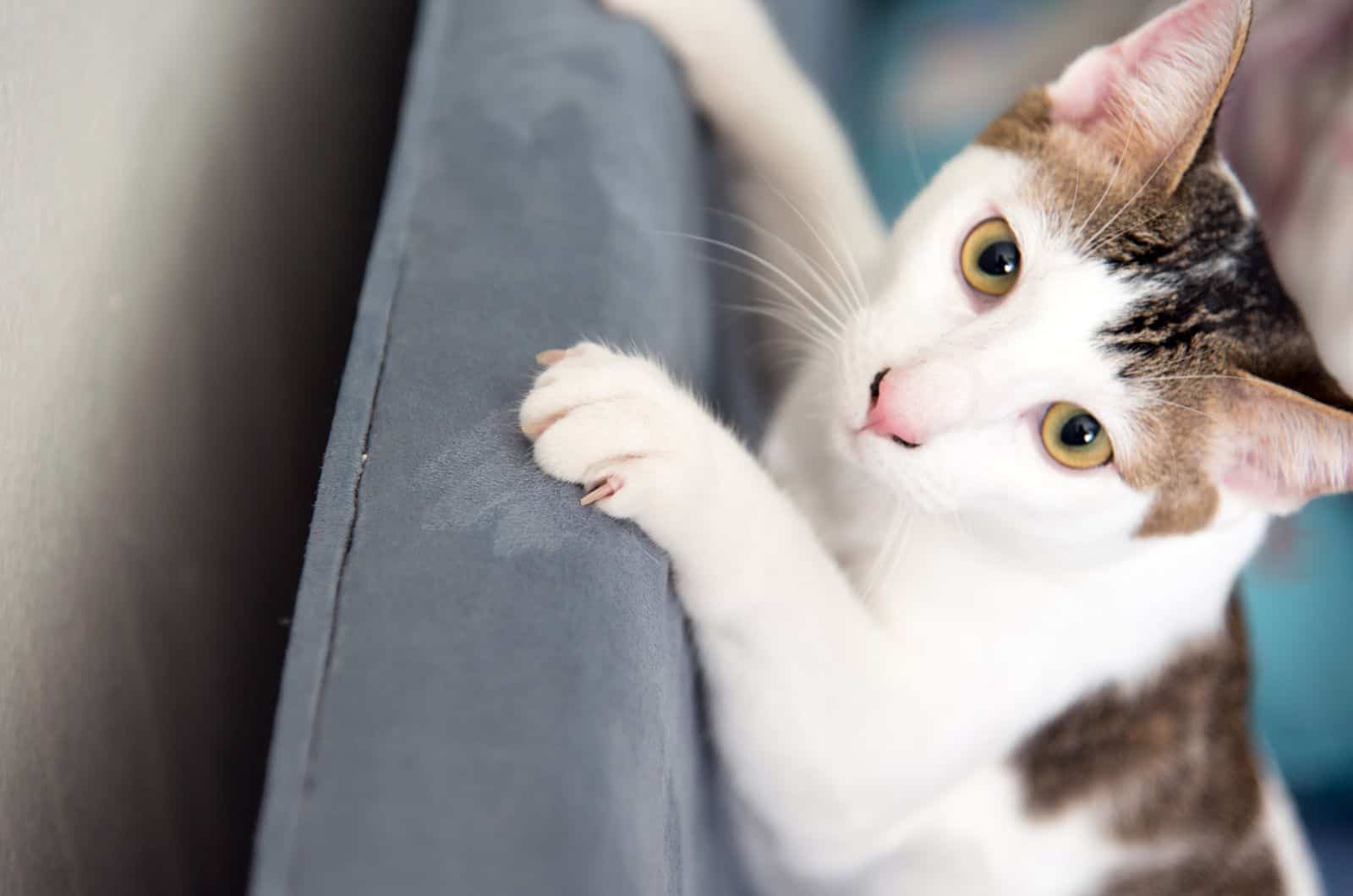
Cats have a unique instinctive nature. Before we start looking for different ways to prevent cats from scratching the furniture, first we need to ask ourselves “Why does my cat scratch the furniture?”
If you recently became a cat parent to a new cat or kitten, you may encounter these problems, especially if the cat has previously lived outdoors or if it has not been properly trained at a young age.
Scratching behavior is very common in cats and it happens for several reasons. Read on and find out why do cats scratch furniture and how to keep cats from scratching furniture for good.
Why Do Cats Scratch Furniture?
Scratching is absolutely normal behavior in the cat world, even though it may seem a bit unnatural in our homes. Cats scratch for many reasons.
For example, outdoor cats usually scratch trees to maintain their claws, however, indoor cats don’t have real trees.
Of course, there are certain things that are usually used to make a home more cat-friendly; scratching posts, cat trees, cat toys and similar are all useful alternatives to scratching furniture!
However, if your cat isn’t provided with at least one of these things, or if they don’t find them appealing, then you may have furniture issues.
Besides furniture, cats may also be very interested in curtains (which is why so many cat parents seek out cat-proof curtains), floors, and walls.
To explain this frustrating cat’s behavior, here are some reasons why cats scratch furniture.
1. To Reduce Stress
When cats feel extremely stressed, they usually start scratching furniture or something else in order to reduce the stress and feel more relaxed.
If they don’t relax and experience a reduction in stress levels, it may lead to even worse behavior problems such as showing signs of aggression, hiding all the time, pooping on the floor randomly, urinating outside of the litter box, and similar.
In order to avoid an escalation of unwanted behavior, pay close attention to what your feline friend is trying to tell you and create a calm and quiet environment for your kitty, eliminating things that cause them stress.
2. Maintaining Their Claws
It is a natural thing for cats to maintain their claws; they need to do it! Outdoor cats don’t have anyone to trim their nails, therefore they do it themselves, by scratching trees to sharpen their claws.
Even though indoor cats usually have their nails trimmed regularly, it’s in their nature to scratch.
Scratching removes the dead outer part of their nails, making them sharper and ready for their action when required! As well as making them sharper, cats keep their claws in healthy condition by scratching.
3. Stretching
Every time cats scratch something, they do some great stretching exercises. Most cats sleep several times throughout the day, therefore stretching is a very important exercise that helps them keep their body in a good condition.
In fact, stretching exercises improves their blood flow and helps their muscles to relax and move more easily, which is very important, especially for outdoor cats that hunt their prey.
4. Marking Territory
Cats sometimes scratch furniture in order to mark their territory, however, to do this, they don’t actually have to leave visible scratch marks.
In case you didn’t know, a cat’s paws have scent glands that produce odors to mark territory, this means that important information is left behind when they are scratching furniture.
Marking territory is an extremely important part of a cat’s communication, and this behavior may be present even if you only have one feline friend in your environment.
If you have a multi-cat household, this behavior may be increased.
8 Useful Solutions To Stop Cats From Scratching Furniture

If you’re having scratching problems with your furry troublemakers, don’t worry – I’ve got you covered.
Although scratching is a very common cat’s behavior, it can be really annoying, especially if they’re destroying your furniture (and leaving you with hefty repair or replacement bills!).
Luckily, there are many other things that cats can use for scratching.
The most important thing is to redirect their attention and train them to use things that have been made specifically for scratching. Don’t forget about rewards so that they want to repeat the good behavior!
Keep reading to find 8 brilliant solutions on how to keep cats from scratching furniture, beginning with the most effective solution – scratching posts !
1. Provide Your Cat With Scratching Posts!
Cats need to be trained, just like dogs or any other pet. So, if you want a well-behaved kitten, then you should start training and socializing it from a young age.
Scratching is a natural behavior that usually appears when kittens reach 8 weeks of age, so this is the perfect time to immediately redirect their attention from your furniture to cat scratching posts.
Scratching posts are designed so that cats can scratch without the risk of destroying furniture around your house. That’s a good thing because scratching plays an important role in their everyday life.
Introduce your feline to the new scratching posts and reward it every time it uses it. By using positive reinforcement, the kitten will eventually realize that using a scratching post is a good thing and continue using it.
It’s better to use scratching posts that are made of material such as sisal fabric that will encourage the kitty to scratch it even more. A good cat scratching post will be more appealing to a cat than your furniture!
If you want your cat to use the cat scratcher, then its location is very important. It should be placed near the cat’s favorite spot in the house, or near the place where they usually like to mark their territory.
Avoid putting the scratching post in corners that aren’t interesting to cats. If your feline doesn’t seem interested, you can put a little bit of catnip onto the scratching surface to attract its attention.
2. Provide Your Cat With Toys And Cat Trees!
Cats may start scratching and destroying furniture and other things when they get bored or aren’t receiving enough attention.
Every cat needs and deserves a lot of attention, and being a pet parent is a big responsibility. If you want your feline friend to be happy and satisfied then you should provide her with a lot of love and attention and spend a lot of time with her.
Playtime is the most important part of the day; you should try to play with your cat whenever you can.
If you need to leave your feline alone, then my advice is to provide her with a lot of interesting toys that will keep her busy and that will keep her both mentally and physically active.
Having cat trees for your cat to climb on is a great way to keep them occupied and they often also have scratching posts attached.
When it comes to trees, cats adore climbing and jumping or being in very high positions so that they can have a full view.
A cat tree is the perfect thing for cats to play and rest in. Nowadays, there are a lot of different cat trees on the market so you can choose between cat trees that look like real trees, modern cat trees, and others.
Whichever design you choose, it should keep the cat busy and make it forget about the furniture, which is the main thing. Don’t forget to reward your cat for using the cat tree with the most delicious cat treat.
3. Use Nail Caps!
If scratching behavior gets out of control, don’t worry as I still have a solution for you – cat nail caps.
In case you haven’t heard about these, cat nail caps are caps that can be made of different materials, but usually plastic, and they are used to cover a cats claws to prevent them from scratching.
These caps are glued onto the cat’s nails, but most importantly, they’re not harmful and they don’t stop the cat’s nails from growing. That means that nail caps should be replaced every four to six weeks.
You just need to choose the right size of caps for your cat and learn how to apply them properly.
Besides the fact that they prevent cats from scratching around, with these nail caps your cat will get a new fabulous look, because you can even choose between different cap colors for your fancy furry friend.
4. Use Sticky Tape Or Spray!
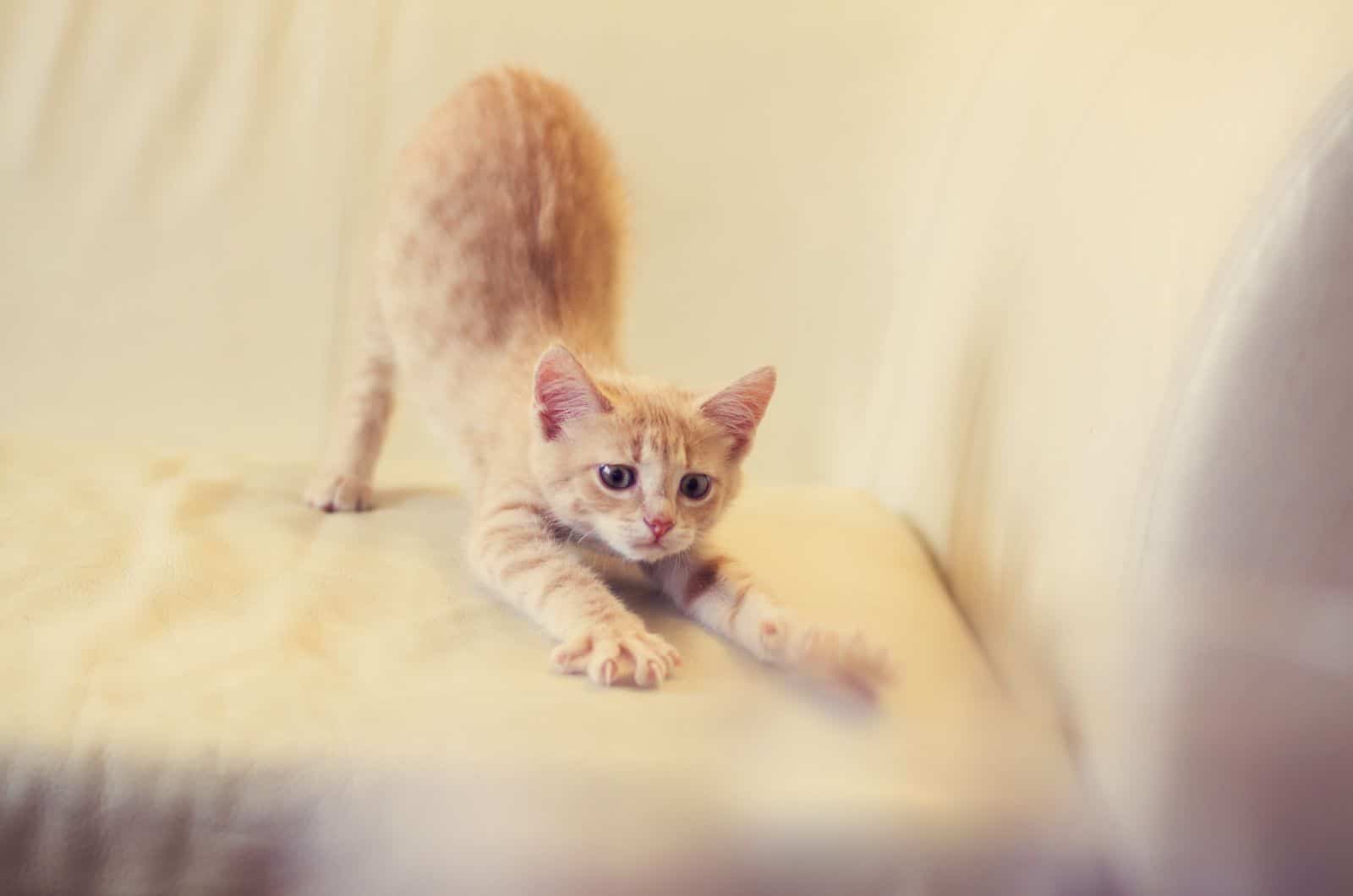
Using double-sided sticky tape or cat deterrent spray may be very useful. The reason for that is because cat’s don’t like sticky things, and they don’t like sticky paws.
If you place sticky tape in front of the furniture that your cat scratches most, it may change its mind after stepping on the sticky tape.
This is also a good idea if you want to stop your kitty from jumping on counters and similar surfaces.
Certain sprays will make cats think that they’re already marked their territory so they probably won’t scratch that place again.
Besides these scratching sprays, there are smells that cats don’t like and they will completely avoid them. These scents can also be used to stop cats from scratching furniture.
Some of these smells are citrus fruit, pine, spices, vinegar, some herbs, and similar, so you can also use these things to make a spray that will stop your feline friend from destructive scratching.
5. Use Vinyl Panels!
Another useful solution is to put clear vinyl panels on the furniture that your kitty usually scratches. These panels actually provide you with an invisible protection.
They come with screw pins which means that they’re very easy to install, but the most important thing is that your cat cannot get to their favorite piece of furniture to scratch.
6. Use Tin Foil!
Using a tin foil may be another solution because cats don’t really like the structure of the foil. It is a tried-and-tested cat deterrent that works for many pet-owners.
Simply place aluminum foil on the spots that cats usually destroy. Most cats don’t like the sound of it or the feel of walking on it. It makes them very uncomfortable and they will usually avoid it at all costs.
7. Trim Your Cat’s Nails!
In order to discourage the scratching behavior and prevent cats from completely destroying the furniture, make sure you trim your cat’s nails regularly.
Whether you are dealing with unwanted behavior such as scratching or not, nail trimming is extremely important for your cat if you want to keep their paws in good condition.
First of all, claws and paws are an important part of a cat’s body; they use them for many things besides walking. For example, they use their claws as a defense mechanism.
This is why it’s so important to trim your cat’s nails frequently in order to avoid cat claw infection or similar paw pad issues as their paws are extremely sensitive.
In order to keep the cat’s claws in a good condition, here are some tips on how to take care of your cat’s nails properly.
• You should trim your cat’s nails every 14 days approximately, depending on how fast they grow.
• Cats may not like nail trimming, so it’s important to get them used to nail trimming from a young age. This too needs a reward to help them accept it more quickly.
• A cat’s paws are highly sensitive, therefore you need to be extra careful while trimming their nails. If you’re not sure of your skills, then it’s best to take your feline for professional nail trimming at a groomer.
• To make it easier for you, do the nail trimming when your cat is at its calmest, then gently push their claws out and use nail clippers to cut only the tips of the nails.
It’s easy to differentiate it because there are clear and pink parts of the nail, and you need to cut this clear part carefully in order not to damage or hurt the cat by touching the pink part.
• And finally, for the best results, make sure that your trimmer is always sharp and that you have yummy rewards with you for afterwards!
8. Consult With An Animal Behaviorist!
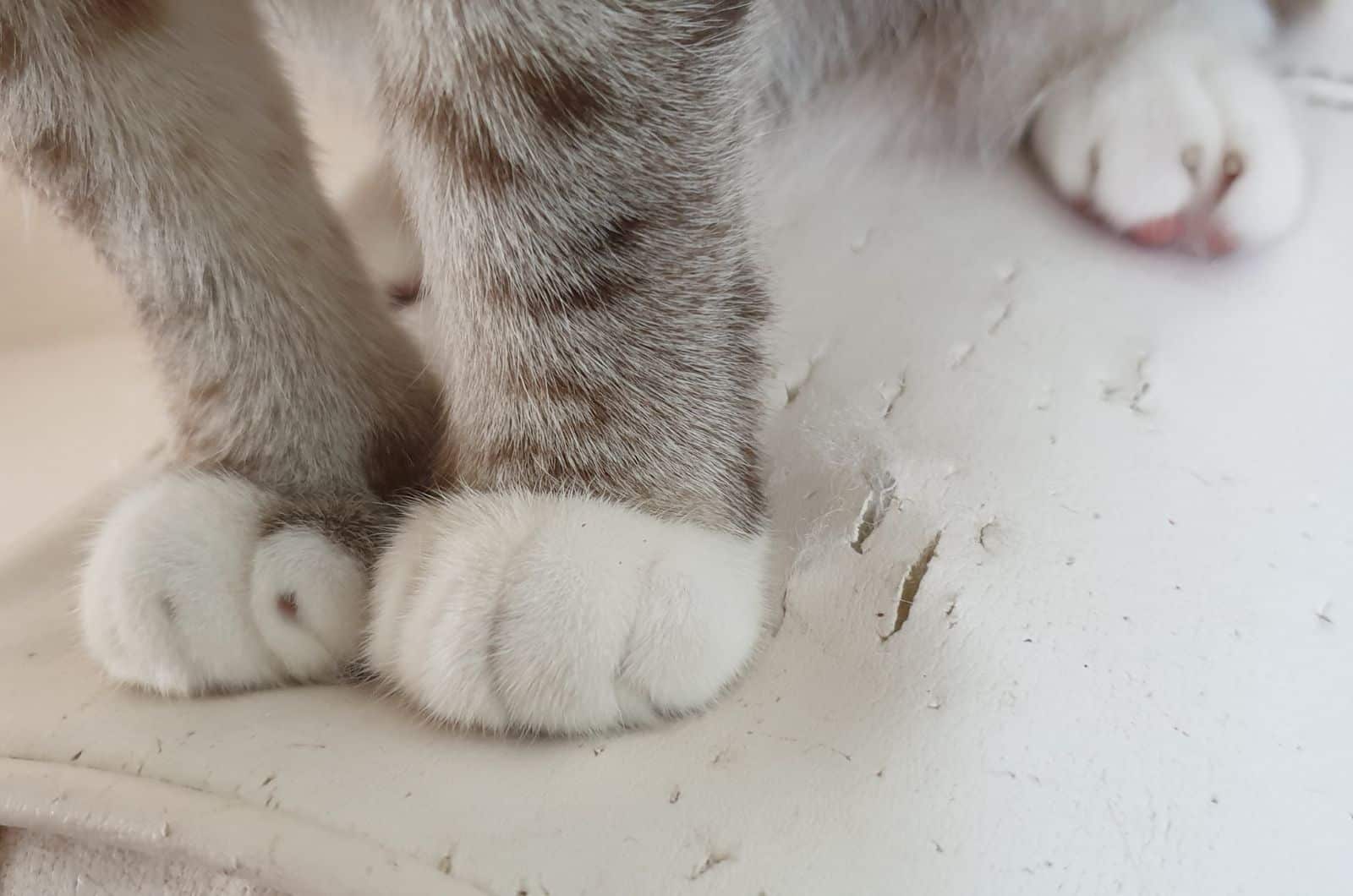
If nothing seems to work or you don’t know how to keep cats from scratching furniture anymore, you can always consult with an animal behaviorist.
They may have some other plan or they may monitor your cat for a while and discover a certain problem that may be the cause for this scratching behavior.
In these cases, that problem needs to be treated in order to discourage scratching the furniture.
In stubborn cases it’s also a good thing to take your feline friend for a vet-check and see if there’s any health problem causing stress to your cat and leading to this unwanted behavior.
All of these solutions can be really useful, however, simply stopping the scratching is not enough.
Once you get the cat to stop scratching the furniture, you have to redirect its attention to something else, such as scratching spots or surfaces, cat trees, toys etc.
Then you have to reward the good behavior so that the cat understands that it is a good thing and sees this new replacement behavior as something positive.
Every time a cat chooses to use a replacement for scratching behavior, reward them. If they go back to scratching furniture, you can also try using the “NO” technique.
That means to make a loud noise or say No to your cat to get her attention as that behavior is not acceptable, and immediately after that, try to redirect her attention to something positive.
What About Declawing?!
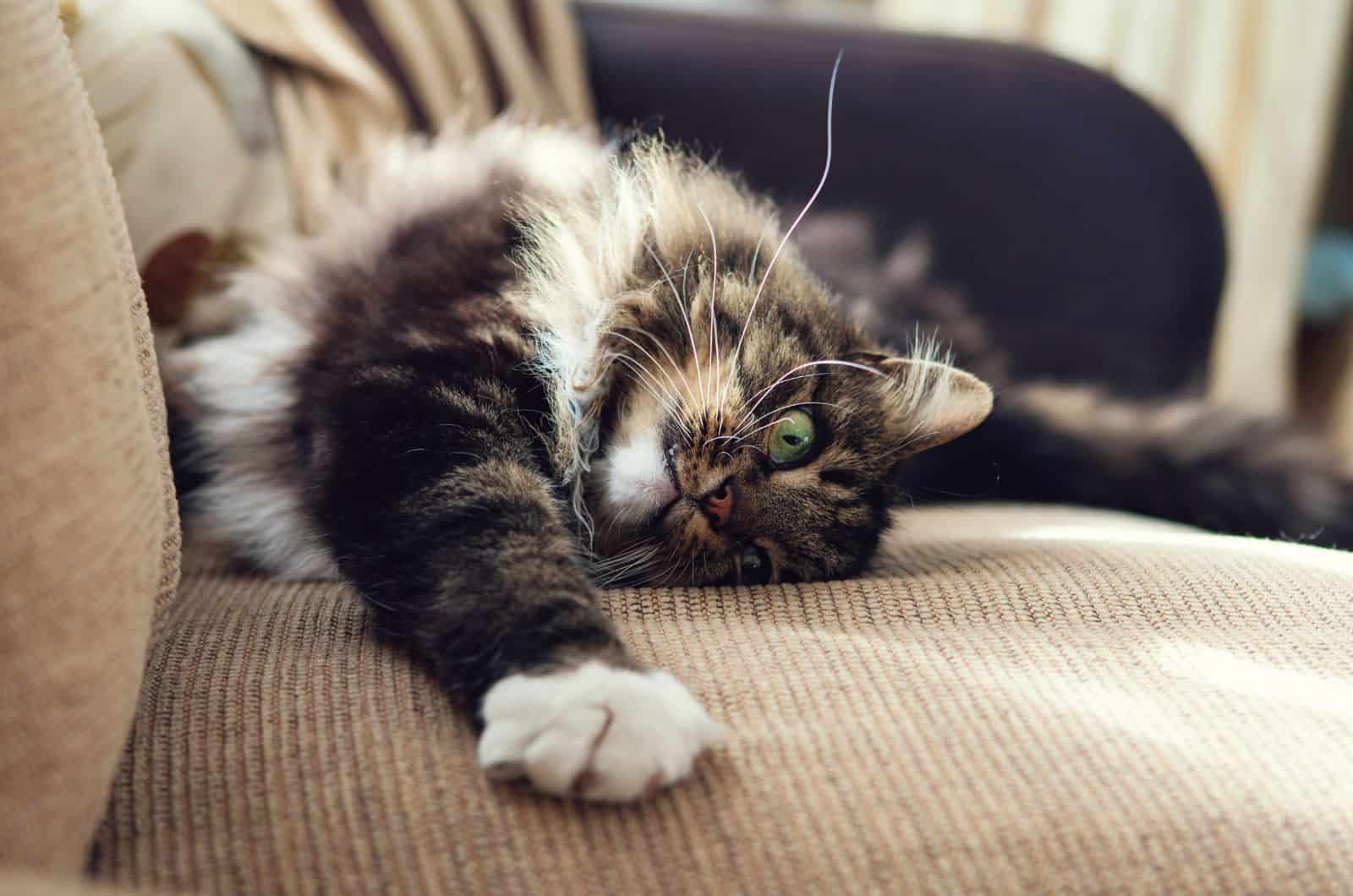
Declawing is a surgical procedure that includes amputation of the last bone of each of the cat’s toes, and after that cat’s claws cannot regrow.
The declawing procedure isn’t recommended because it’s an inhumane treatment for cats which can have serious negative consequences for them.
Also, you may have noticed that most breeders ask you to sign a contract that you won’t declaw your cat because they’re against it.
The reason why cat lovers are against declawing is that claws are very important for cats as they use them during stretching, scratching, for jumping, running and many other things as well as a defense mechanism.
According to the Humane Society, declawing should be forbidden unless the cat suffers from a medical problem such as a nail bed tumor or similar, which is the only time when declawing is actually approved.
The Reasons Why Declawing Isn’t An Option
There are several reasons why people who care about cats are against the cruel declawing procedure:
• Many cats may show signs of aggression after declawing because they don’t have their defense mechanism anymore, therefore cats are scared because they feel unprotected, so they act aggressively to warn away any threat.
• Declawed cats may lose their natural balance because declawing procedure includes removing both nails and bones.
• A declawed cat may start showing other signs of bad behavior such as biting, anxiety, depression, inappropriate use of litter box, hiding, shaking, and similar.
FAQ
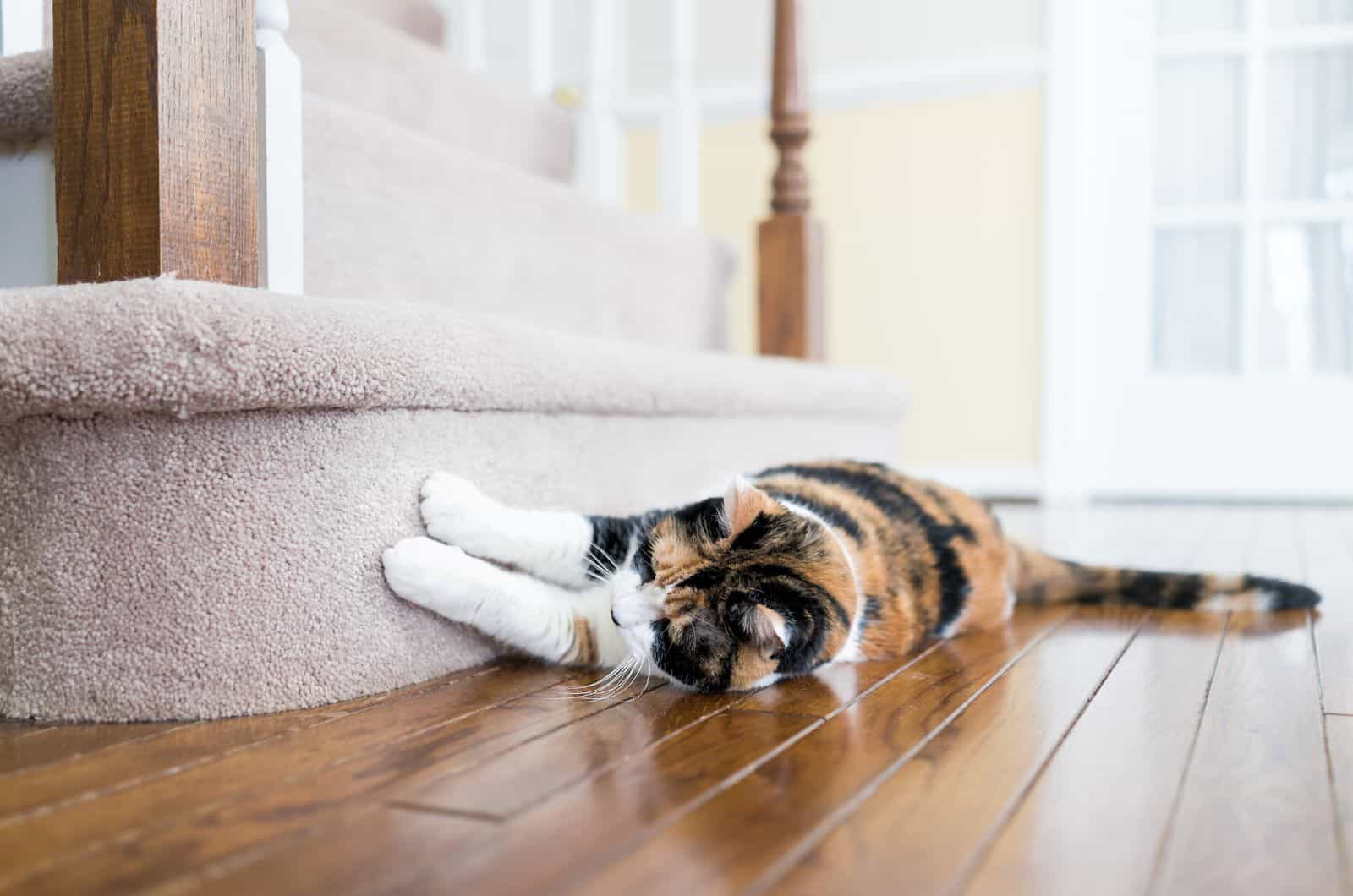
Can Cats Be Trained To Not Scratch The Furniture?
Scratching is a natural behavior in cats therefore it cannot be stopped. However, they can be redirected and trained to scratch things such as scratching posts, cat trees, or other things intended for cats, instead of furniture, walls, flooring, and similar.
What Can I Put On Furniture To Keep Cats From Scratching?
A number of things are useful in stopping cats from scratching including cat deterrents, sprays made of scents that cats dislike, using nail caps, vinyl panels, sticky tape, foil, or providing scratching posts and cat trees.
How Much Does It Cost For A Scratching Post?
There are different types and sizes of scratching posts and their price may depend on that. Therefore the average price of a good scratching post is around $80, however, you can easily find much cheaper ones and more expensive ones.
You can even provide your feline friend with a homemade scratching area made from wood, sisal, etc. to tempt them away from scratching your upholstery!
Wrapping It Up!
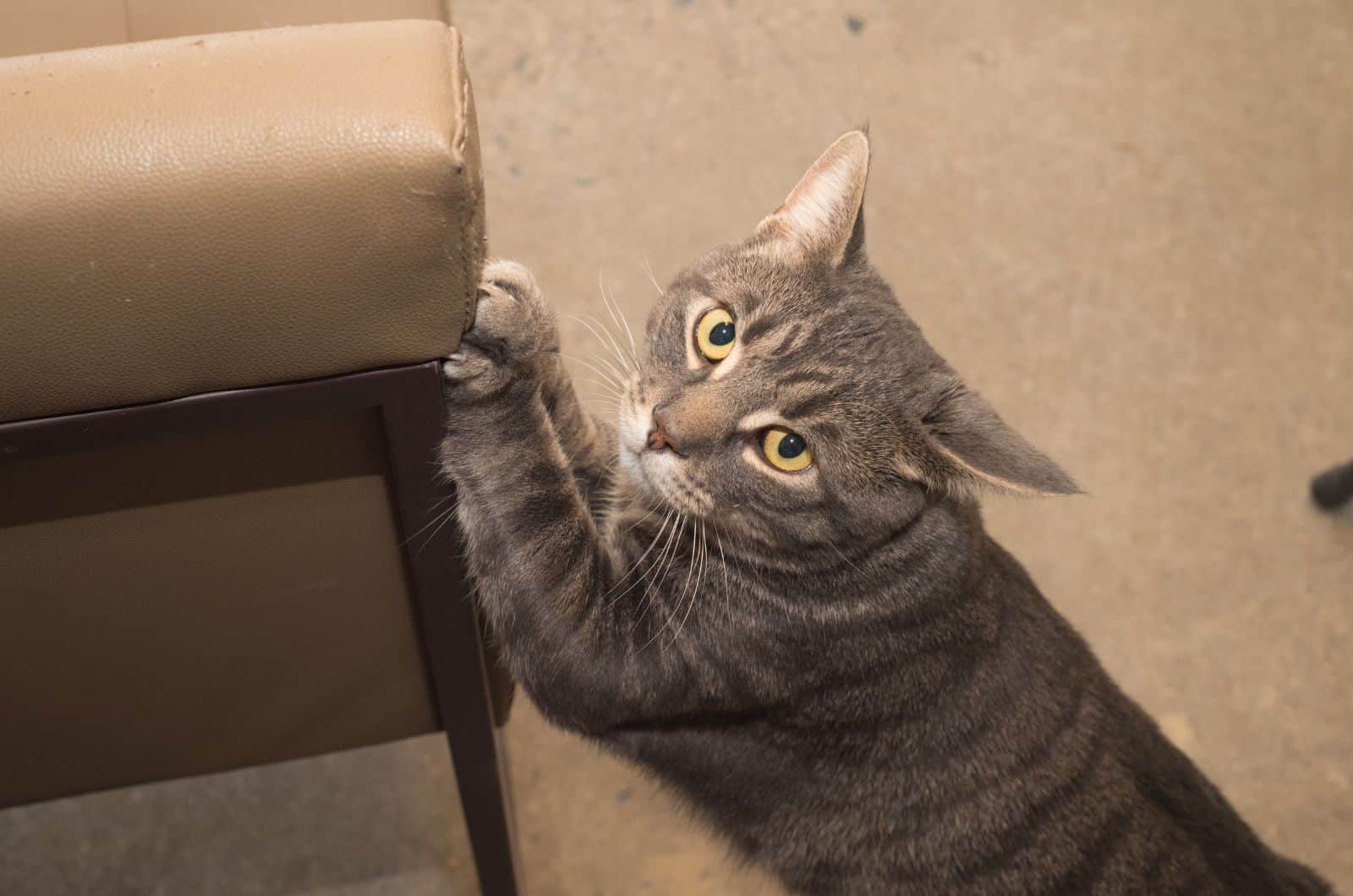
Sometimes, cats can be real troublemakers, and it’s especially hard to know what to do when their destructive behavior is actually just their natural behavior, such as scratching.
It is really difficult when a cat starts engaging in that behavior in your home because it usually causes damage by scratching furniture, walls, floors, and similar things.
Cats can benefit from scratching and therefore you cannot completely stop this behavior. However, you can redirect it using positive reinforcement, swapping scratching furniture for scratching posts, toys, cat trees, and similar.
Some of these solutions may be more effective than others (all cats will respond differently) but it’s important to be persistent and train the cat properly, as well as reward good behavior every time it occurs.
In order to stop the destruction, some people think declawing is an option, however, that’s absolutely not true. So, if you’re dealing with scratching problems, forget about declawing, and start paying more attention to your feline.
In order to solve this problem, try some of these useful solutions that are listed in this article, and good luck!



